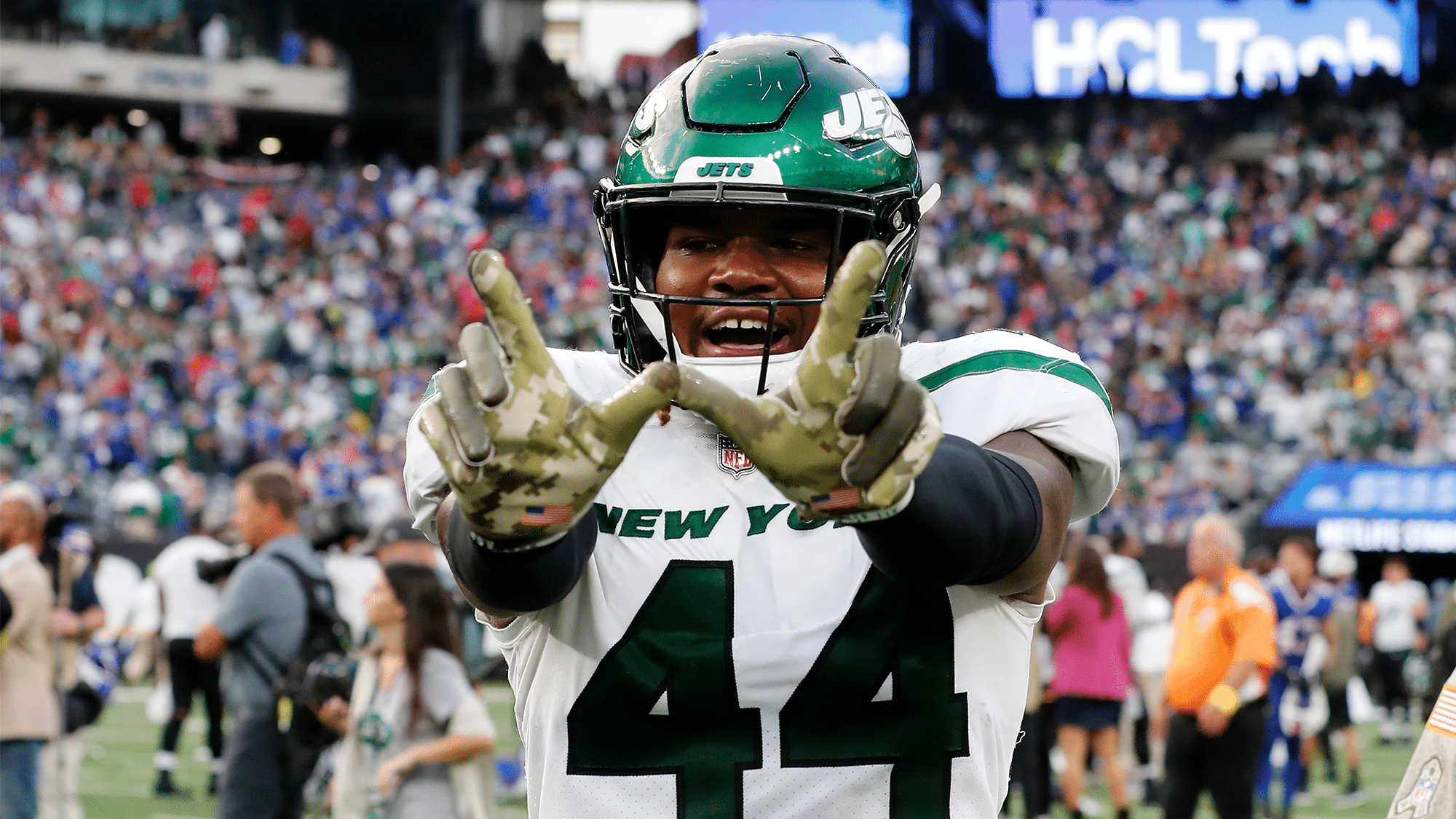The New York Jets could easily upgrade their depth at these two positions
After two consecutive seasons of excellence, the New York Jets’ defense can fairly be considered elite — or at least close to it.
The thing is that with a few easy tweaks, it could be even better.
The Jets have two overlooked depth players whose performance has been lackluster, even for backups. There’s a fairly easy way to improve them for cheap, but they need to be willing to do so.
Jamien Sherwood
The Jets have quite a few players on their defense with stark run-pass splits. They’ve dealt with it accordingly by rotating between likely run and pass snaps. Although Bryce Huff was the most glaring example of this last season, another one was Jamien Sherwood.
After the Jets decided not to re-sign Kwon Alexander last offseason, the assumption was that they would either play more big nickel (3 safeties) or use Sherwood as their base weakside linebacker. The team essentially did a hybrid of big nickel, using Sherwood, and just playing more regular nickel coverage with Michael Carter II on the field.
Overall, Sherwood played just 193 defensive snaps in 16 games, about 12 snaps per game. That was just one-third of the snaps Alexander saw in 2022 with the Jets. Still, his splits between run and pass were telling: he played 141 run snaps and 52 against the pass (7 blitz, 45 in coverage) — 73.1% against the run.
Sherwood demonstrated why he had such stark splits. His 78.9 Pro Football Focus run defense grade ranked 14th out of 80 qualified linebackers (min. 140 run defense snaps). In the passing game, though, PFF charged Sherwood with allowing 8 receptions on 8 targets for 89 yards, 1 touchdown, 11.1 yards per target, and a 152.6 targeted passer rating. The positional average among 73 qualifiers (min. 200 coverage snaps) was 7.4 yards per target. His 0.79 EPA per target allowed ranked second-worst among 108 linebackers with at least 30 coverage snaps.
Sherwood’s career trends back up this run-pass split, too. In his three career preseasons, he has allowed 17 of 20 completions (85%) for 242 yards (12.1 yards per target), one touchdown, and a 133.8 targeted passer rating. His run defense grades in the 2022-23 preseasons were 72.4 and 75.7.
Perhaps the Jets are okay with continuing to split this way. Still, there’s likely an easier way to upgrade at least somewhat in coverage should they choose to do so. Alexander is once again a free agent, and he signed for the league minimum last season. Zach Cunningham allowed 6.1 yards per target in 2023, and he’s also still available after playing at a rate barely above the minimum.
Given Sherwood’s low usage, it’s likely the Jets will simply continue to roll with him on pass sets. Still, they would be wise to keep him off the field near the goal line due to his coverage weaknesses.
The bigger question is what happens if he needs to take over for one of the top two linebackers. The Jets’ coverage would likely suffer significantly.
Micheal Clemons
Jets fans were excited for Micheal Clemons’ 2023 season after he beefed up to 286 pounds and walked into training camp twirling a baseball bat while shirtless. The reality of his performance was far different, though.
Clemons saw a decent-sized role in 2023, playing 368 snaps in 16 games (35% in his games played). However, he posted just a 5.1% pressure rate, ranking 113th out of 115 edge defenders (min. 150 pass rush snaps), a decrease from his 9.0% rate in 2022.
While some Jets fans thought Clemons could become a replacement for John Franklin-Myers, their pass rush repertoire is incomparable. Franklin-Myers varies his pass rush approach; Clemons just bull rushes straight into the offensive lineman’s chest on nearly every play with little variation.
Furthermore, Clemons declined significantly as a run defender. In 2022, Clemons led all 88 qualified edge rushers (min. 150 run defense snaps) with an 86.4 PFF run defense grade. He also ranked 14th in run stop rate (8.1%). In 2023, though, he dropped to a 66.3 grade (37th/88) and a 5.4% stop rate (62nd).
When Clemons was a dominant run defender, the Jets could live with his below-average but passable pass rush numbers in his backup role. However, the same could not be said when he was a mediocre run defender with nonexistent pass rush numbers. Clemons was a net liability when on the field and had a larger role than his production merited.
There’s a chance that the Jets will choose to cut Clemons and draft another mid-round edge rusher. His lack of production can be replaced with any JAG (Just A Guy). It’s important to remember that Clemons himself was a JAG — a 25-year-old fourth-round rookie.
Clemons has apparently slimmed down again this offseason. Perhaps he and the Jets hope that he’ll be able to regain his productivity along the edge at 272 pounds instead of 286. Still, with three starting-caliber edge defenders plus a 2023 first-round pick at the position, Clemons’ role seems poised for a big reduction in playing time if he does remain on the team.

